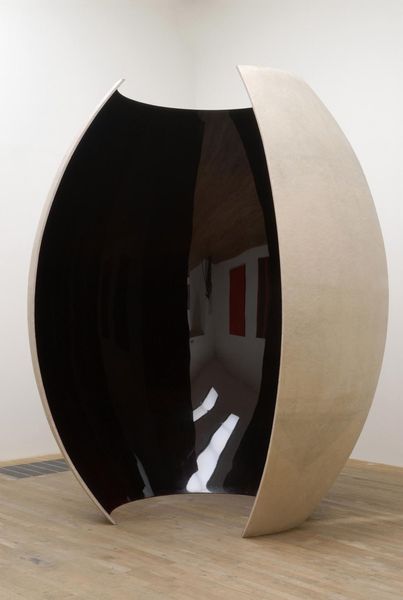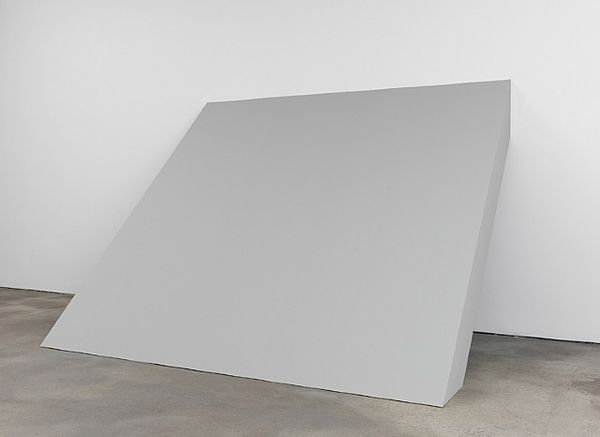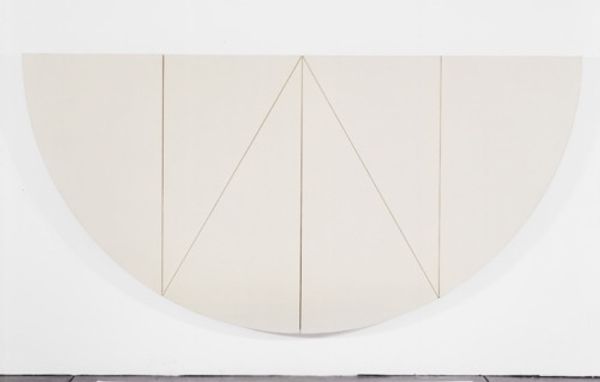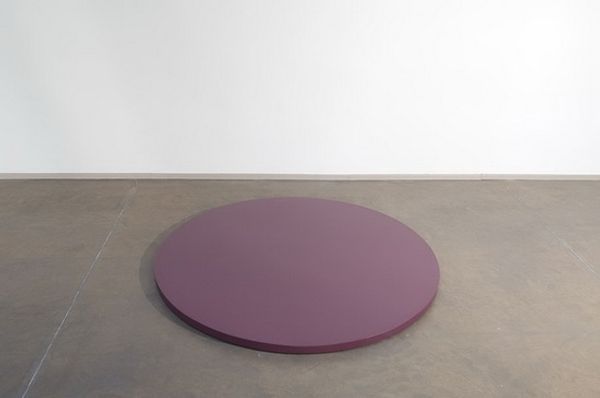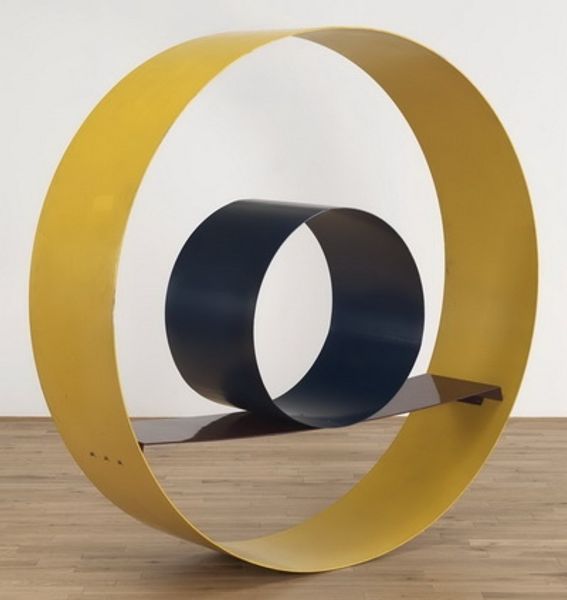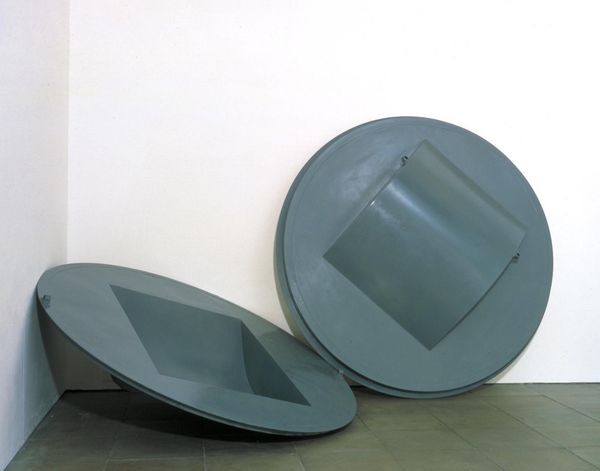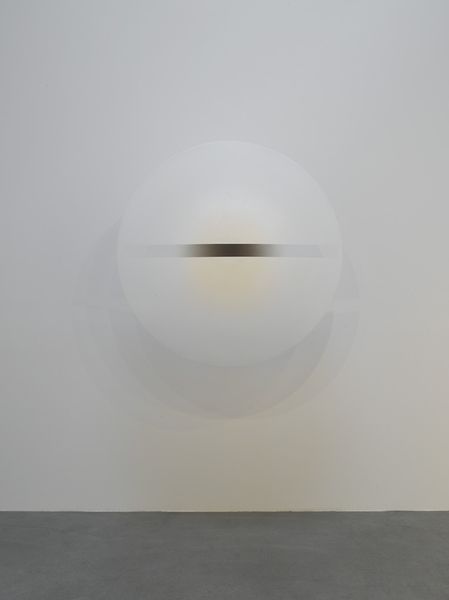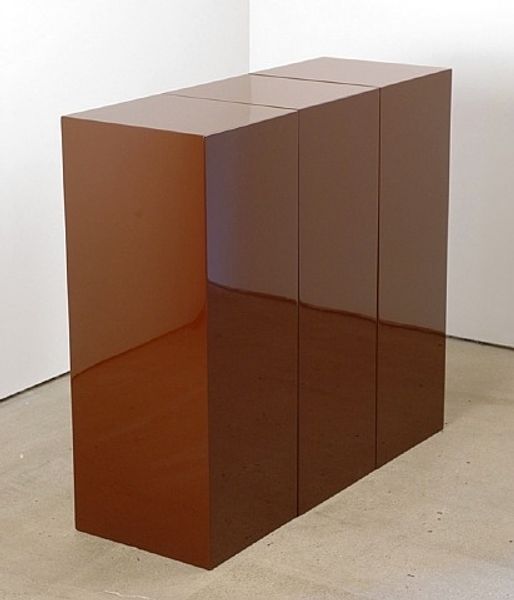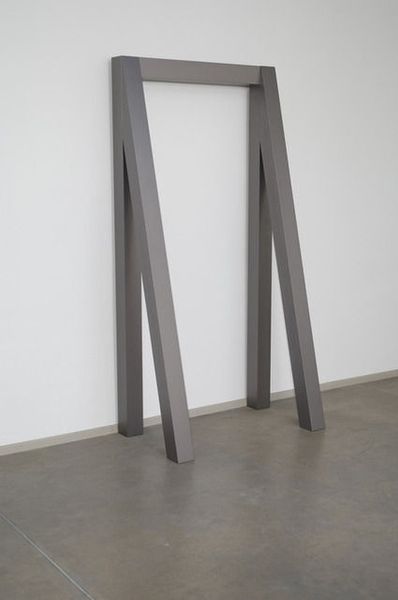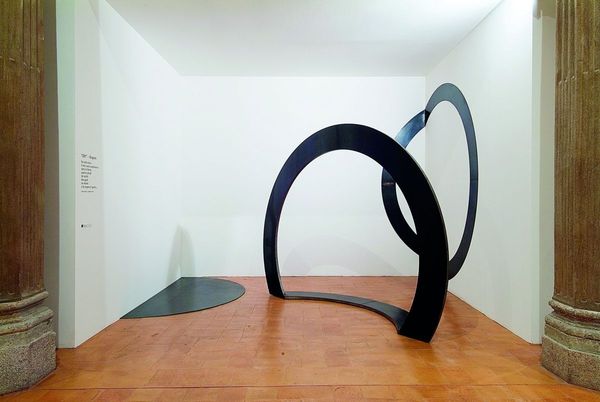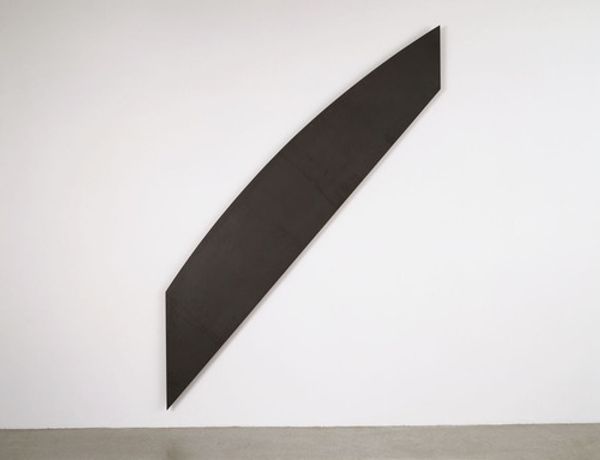
metal, sculpture
#
non-objective-art
#
minimalism
#
metal
#
form
#
geometric
#
sculpture
#
abstraction
#
hard-edge-painting
Copyright: Gianni Piacentino,Fair Use
Editor: This is Gianni Piacentino's "Metalliod Blue-Gray Without Oval Sculpture" from 1968, and it appears to be made of metal. Its somber, almost melancholic blue-grey hue creates an intriguing contrast with the simple geometric shapes. What are the symbolic elements in this piece that speak to its time and our own? Curator: That oval…it's not just an oval. Think of it as a 'window.' Not to the outside world, but inwards. Into the psyche. This piece emerged during a time of tremendous social upheaval. The coldness of the metal, the deliberate geometry… does that feel disconnected or intentionally aloof to you? Editor: I can see what you mean about the social upheaval; it’s detached, yes, almost as if trying to create a sense of order or control amidst chaos. It's as though the oval represents a need for introspection. Curator: Exactly. And the color, that muted blue-gray – a colour drained of vibrancy. Consider it a reflection of the anxieties of that era, distilled into this simplified form. There’s a starkness that demands attention. Piacentino doesn't offer easy answers or narratives, but encourages the viewer to bring their own experiences to complete it. What cultural connections might it inspire in a contemporary viewer? Editor: That's really fascinating. Now I’m thinking about how minimalist art, even in its abstraction, always carries traces of its cultural moment and connects us to it. Curator: Precisely. We look at what endures - form, line, color - and how the image continues to evolve with time as we learn from the cultural echoes. We create its cultural significance, and the image recreates our understanding.
Comments
No comments
Be the first to comment and join the conversation on the ultimate creative platform.

